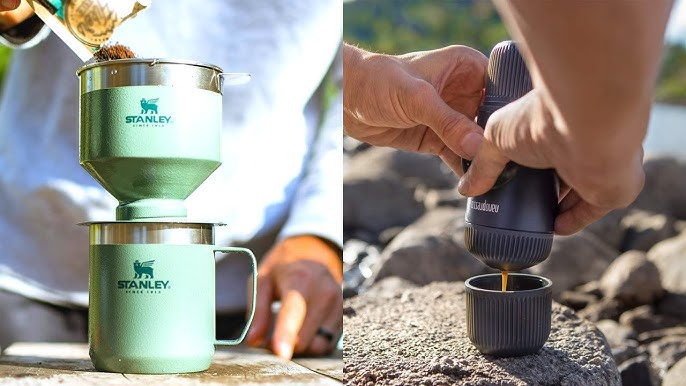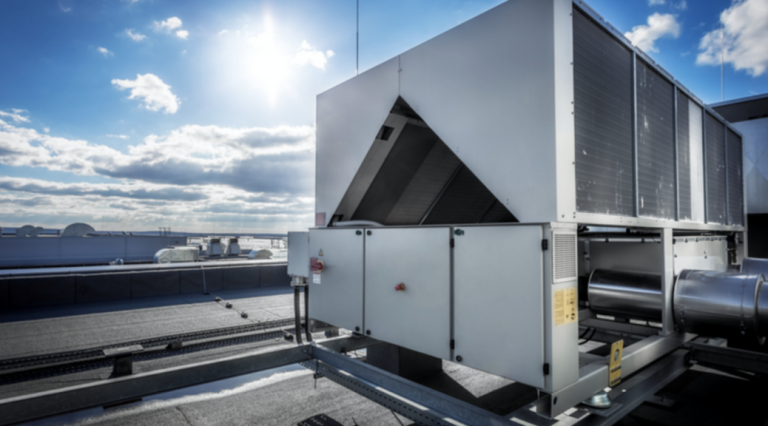Travel Espresso Machines: Ultimate Guide to Outdoor Brewing
For coffee enthusiasts who refuse to compromise on quality while traveling, handheld espresso devices have become an essential piece of gear. These compact brewers have surged in popularity over the past few years, transforming how adventurers, campers, and business travelers enjoy their daily caffeine fix. Whether you’re summiting a mountain at dawn or working remotely from a beachside cabin, these portable machines deliver authentic espresso without requiring electricity or bulky equipment.
The modern traveler faces a common dilemma: hotel coffee is often disappointing, and finding a quality café in remote locations can be impossible. Traditional espresso machines are too large and power-dependent for most travel scenarios, creating a gap that portable solutions now fill perfectly. Today’s handheld espresso makers combine innovative engineering with practical design, offering genuine espresso extraction in devices small enough to fit in a backpack. This guide explores everything you need to know about selecting, using, and maintaining a travel espresso machine that matches your specific brewing needs on the road.
Understanding Handheld Espresso Devices
Handheld espresso devices are manual brewing tools designed to extract espresso shots without electricity or external power sources. Unlike traditional espresso machines that rely on electric pumps and boilers, these portable units use human-powered pressure mechanisms to force hot water through finely ground coffee. Most models operate through either a piston system, where you manually pump to build pressure, or a twist-and-press mechanism that generates the necessary force for extraction. The key advantage lies in their independence from power outlets, making them ideal for camping trips, hotel rooms, office desks, and outdoor adventures where conventional brewing equipment simply isn’t practical.

These devices typically weigh between eight ounces and two pounds, with dimensions comparable to a water bottle or thermos. Despite their compact size, quality handheld espresso makers can generate between 8 to 15 bars of pressure, which approaches the 9 bars considered optimal for traditional espresso extraction. This pressure capability allows them to produce shots with genuine crema and concentrated flavor profiles that instant coffee or simple pour-over methods cannot match. The brewing process takes approximately two to three minutes from start to finish, including the time needed to heat water separately since most portable models don’t include heating elements.
The primary benefits extend beyond mere portability. These devices offer complete brewing control, allowing users to adjust grind size, water temperature, and extraction time to suit personal preferences. They’re also remarkably durable, with many models constructed from aircraft-grade aluminum or reinforced plastics that withstand the rigors of travel. Maintenance requirements are minimal compared to electric machines—no descaling cycles, no complex cleaning routines, just a quick rinse after each use. For travelers who value quality coffee but want to avoid the expense and inconsistency of café purchases, handheld espresso devices represent a one-time investment that pays dividends across countless trips.

Top Travel Espresso Machines
The market offers several standout handheld espresso devices, each with distinct characteristics suited to different travel styles. Manual piston-operated models remain the most popular category, featuring a straightforward pumping mechanism that builds pressure through repeated hand motions. These devices typically consist of a brewing chamber that holds ground coffee, a water reservoir, and a piston that you pump to generate extraction pressure. The simplicity of this design means fewer components that could fail during travel, and the transparent operation gives users direct feedback about the brewing process. Most piston models can produce shots comparable to café-quality espresso when technique is mastered, though they require more physical effort than twist-operated alternatives.
Twist-and-press espresso makers offer a different approach, using a rotating mechanism to compress a spring or pneumatic system that releases stored pressure for extraction. These devices generally require less physical strength and provide more consistent pressure throughout the shot, making them easier for beginners to use effectively. The trade-off comes in slightly more complex internal mechanisms and often a higher initial cost. Some advanced twist models include pressure gauges that display real-time extraction data, helping users dial in their technique more precisely. For travelers prioritizing convenience over the hands-on control of piston devices, twist-operated models deliver reliable results with minimal learning curve.

Hybrid designs have emerged that combine manual pressure generation with additional features like integrated grinding chambers or dual-wall filter baskets that compensate for grind inconsistencies. These versatile options appeal to travelers who want maximum functionality in a single device, though they typically weigh more and occupy additional pack space. Some models incorporate vacuum-insulated chambers that maintain water temperature during extraction, addressing one of the primary challenges of manual espresso making in outdoor environments. When evaluating specific devices, consider construction materials—stainless steel and aluminum offer superior durability compared to plastic components, particularly for the brewing chamber and piston assembly where pressure and heat stress are highest. The best travel espresso machine ultimately depends on your specific priorities: weight-conscious backpackers might choose ultralight piston models, while car campers could opt for feature-rich hybrid designs that sacrifice some portability for enhanced brewing capabilities.
How to Choose the Best Travel Espresso Machine
Your travel style should dictate which espresso device makes the most sense for your specific needs. Backpackers and ultralight hikers need to prioritize weight and packed dimensions above all else, making minimalist piston models under twelve ounces the obvious choice. These stripped-down devices sacrifice features like pressure gauges and insulated chambers but deliver functional espresso in a package that won’t burden your load. Car campers and RV travelers face fewer weight constraints, allowing them to consider heavier models with additional capabilities like larger brewing chambers that accommodate double shots or integrated accessories that reduce the number of separate items to pack. Business travelers splitting time between hotels and client offices typically benefit from mid-weight options that balance portability with consistent performance, particularly models with protective carrying cases that prevent damage during transit.
Brewing capacity directly impacts both the device’s size and your satisfaction with the results. Single-shot chambers hold approximately 8-12 grams of ground coffee and produce 25-35 milliliters of espresso, which suffices for solo travelers who prefer concentrated shots or plan to dilute them into americanos. Double-shot models accommodate 14-18 grams and yield 50-70 milliliters, better serving those who drink larger beverages or travel with a companion who shares coffee duties. Consider how many shots you’ll realistically brew per session—making multiple consecutive singles with a small device becomes tedious, while carrying a larger double-shot maker solely for occasional single servings wastes pack space and adds unnecessary weight.

Durability considerations become critical when your espresso maker will endure the stresses of travel. Examine the materials used in pressure-bearing components—the brewing chamber, piston assembly, and any seals or gaskets. Stainless steel chambers resist corrosion and maintain structural integrity under repeated pressure cycles better than aluminum or plastic alternatives, though they add weight. Check whether replacement parts like gaskets and filters are readily available, since these wear items eventually need changing regardless of build quality. Read user reviews specifically mentioning longevity and failure points rather than just initial impressions. A device that performs brilliantly for the first month but develops leaks or cracked components after moderate use represents poor value regardless of its initial cost. Temperature retention capabilities matter especially for outdoor use in cold environments—some models lose heat rapidly during extraction, resulting in sour, under-extracted shots that waste good coffee and effort.
Using Your Handheld Espresso Device
Successful espresso extraction with a handheld device begins with proper preparation. Start by heating water to between 195-205°F using a camp stove, kettle, or any available heat source—water that’s too cool produces sour, weak shots, while boiling water creates bitter, over-extracted results. While the water heats, grind your coffee to a fine consistency similar to table salt, measuring approximately 8-10 grams for a single shot or 14-18 grams for a double. Preheat your device by running hot water through the empty brewing chamber, which prevents temperature loss during extraction that would otherwise compromise flavor. Load the ground coffee into the portafilter or brewing basket, distributing it evenly before tamping with firm, level pressure to create a uniform puck that water will flow through consistently.
The extraction process requires attention to pressure and timing. Pour your heated water into the device’s reservoir, then begin applying pressure through pumping or twisting according to your model’s mechanism. Aim for steady, controlled pressure rather than aggressive force—rushing the extraction produces channeling where water finds paths of least resistance, leaving portions of the coffee bed under-extracted. A proper shot should take 20-30 seconds to complete, emerging as a steady stream that transitions from dark to golden-brown. If liquid gushes out in under 15 seconds, your grind is too coarse or your tamp too light; if nothing emerges after 40 seconds of effort, the grind is too fine or you’ve tamped excessively hard. These variables require adjustment based on your specific coffee and environmental conditions.
Maintenance determines how long your device remains functional. Immediately after brewing, disassemble the components and rinse away all coffee residue with clean water—oils and fine particles left inside create rancid flavors and eventually clog internal passages. Pay special attention to rubber gaskets and seals, which deteriorate faster when coffee oils accumulate on their surfaces. Every few weeks, perform a deeper cleaning by soaking removable parts in warm water with a small amount of dish soap, then rinsing thoroughly to eliminate any soap residue. Inspect gaskets regularly for cracks or loss of elasticity, replacing them when they no longer create proper seals. Store your device with components separated rather than assembled, allowing air circulation that prevents moisture buildup and mold growth. Proper care ensures your travel espresso maker delivers consistent performance across years of adventures rather than failing after a few months of neglect.
Common Issues and Solutions
Weak or watery shots typically result from insufficient pressure, coarse grinding, or water that’s too cool. If your espresso lacks body and crema, first verify your water temperature falls within the 195-205°F range using a thermometer. Next, adjust your grind finer by one or two settings and ensure you’re tamping with enough force to create resistance—the coffee puck should feel firmly compressed but not rock-hard. When using piston models, maintain steady pumping rhythm rather than sporadic bursts, as consistent pressure produces better extraction than irregular force application.
Leaking devices frustrate users but usually stem from simple causes. Check that all components are properly tightened before brewing, as loose connections between the chamber and reservoir allow water to escape. Inspect rubber gaskets for visible damage, wear, or coffee residue buildup that prevents proper sealing. Clean gaskets thoroughly with warm water and replace them if they’ve become hardened or cracked—most manufacturers sell replacement seal kits inexpensively. When reassembling after cleaning, avoid over-tightening threaded components, which can strip threads or deform gaskets, creating the very leaks you’re trying to prevent.
Clogged filters and slow extraction occur when fine coffee particles accumulate in mesh screens or internal passages. Disassemble your device completely and rinse each component under running water, using a soft brush to dislodge trapped grounds from filter holes. For stubborn buildup, soak metal parts in a solution of equal parts white vinegar and water for thirty minutes, then scrub and rinse thoroughly. If your device includes a paper filter option, switching from mesh to paper occasionally helps flush accumulated oils. Prevention works better than correction—rinsing immediately after each use takes seconds but prevents the hardened deposits that require aggressive cleaning later.
Travel Espresso Machine Accessories
A portable grinder transforms your coffee quality by ensuring fresh grounds for each brew. Manual burr grinders designed for travel weigh around eight ounces and fit inside most packs, offering adjustable grind settings that let you dial in the perfect consistency for your espresso device. Unlike pre-ground coffee that loses flavor within days of opening, freshly ground beans preserve aromatic oils and produce noticeably richer shots. Collapsible silicone models save space when packed, while stainless steel options provide superior grind consistency at the cost of additional weight.
Insulated carrying cases protect your espresso maker from impacts and temperature extremes during transit. Purpose-built cases include compartments for the device itself plus small pockets for accessories like extra gaskets, cleaning brushes, and measuring scoops. Hard-shell options offer maximum protection for checked luggage or rugged outdoor conditions, while soft neoprene sleeves work well for carry-on bags and day packs where space is limited. A quality case extends your device’s lifespan by preventing the dings and scratches that eventually compromise seals and threaded connections.
Collapsible cups and thermoses complement your brewing setup without adding bulk. Silicone espresso cups collapse to less than an inch thick, weighing under two ounces while providing a proper vessel for enjoying your shot. Vacuum-insulated travel mugs keep americanos or milk-based drinks hot for hours, essential when you’re brewing at a trailhead before a long hike. Consider a compact milk frother if you prefer lattes or cappuccinos—battery-powered models create microfoam in seconds and pack smaller than traditional frothing pitchers, completing your mobile café capabilities. Brands like OutIn have developed integrated systems that combine espresso makers with heating elements and insulated containers, offering all-in-one solutions for travelers who want to minimize the number of separate components they carry.
Elevate Your Travel Coffee Experience
Handheld espresso devices have revolutionized how coffee lovers maintain their brewing standards while traveling, offering genuine espresso extraction in remarkably compact packages. Throughout this guide, we’ve explored the mechanics behind these portable brewers, examined leading models suited to different travel scenarios, and outlined the selection criteria that match devices to specific needs. Understanding the fundamentals of manual pressure generation, proper grinding, and water temperature control empowers you to produce café-quality shots regardless of location, while awareness of common troubleshooting solutions ensures consistent performance across countless adventures.
The right travel espresso machine depends entirely on your individual priorities—weight-conscious backpackers benefit from minimalist piston designs, car campers can embrace feature-rich models with enhanced capabilities, and business travelers find value in mid-weight options that balance portability with reliability. Investing in quality accessories like portable grinders and protective cases maximizes your brewing potential and extends your device’s functional lifespan. With proper technique and maintenance, a well-chosen handheld espresso maker becomes an indispensable travel companion that transforms ordinary mornings into exceptional coffee experiences, whether you’re watching sunrise from a mountain summit or preparing for meetings in a hotel room thousands of miles from home.







